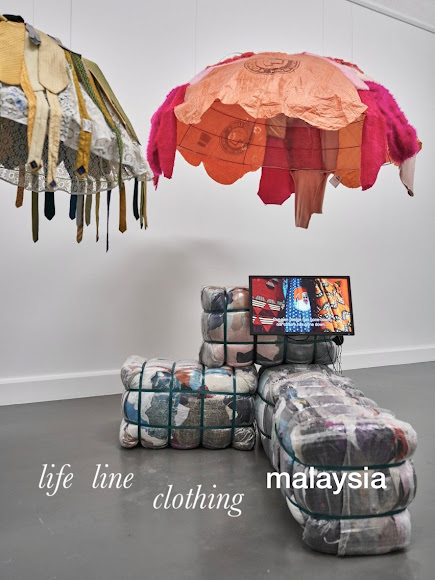Life Line Clothing Malaysia - Fashion 4 Change
[DST64304]
Andi Syahnaz Asyira - 0350545
Bachelor in Fashion Design Technology (Hons)
Taylor's University
Fashion Project 1
Week 1 - 28 March 2022
On the first day of semester 2 Ms Maria gave us an overview of our projects, and our theme is zero waste fashion. She explained why it is critical for us to contribute to sustainability, as well as how the programme will guide us in this regard.
We then visited Life Line Clothing Malaysia's warehouse in Pelabuhan Klang, Selangor. Life Line Clothing is a company that recycles textiles. Using a sorting belt and sorting tables, the staff at Lifeline sort all of the clothing into different categories.
When we first arrived, we were greeted by Andrew, who soon started showing us around, beginning with the donation boxes that are placed throughout the country. People can donate their unwanted clothing in the bins, which the factory will collect. In addition to clothing, the factory accepts shoes, bags, and linen. Unwearable items are cut up into rags and sold to industries as cleaning cloths, while items in good condition are exported to be sold as secondhand clothing. So, even if the items can't be recycled, they find a way to put them to good use, ensuring that nothing is truly wasted or thrown away.
He then took us to the factory's main area, where workers were seen sorting the items into their various groups. He also showed us products made by women at home, such as tote bags made from recycled baju kurung and sold for 5 ringgit each. The bags come with a tag that tells the story of the women who made them. He then took us to their office lounge area, where he gave us a brief presentation about their company and why this issue is so important for them. He also showed us their experience at Paris Fashion Week a few years ago, where Life Line created outfits entirely out of recycled clothing.
After that, we went to the shop where they resell donated items, such as clothing, jewellery, toys, children's clothing, shoes, bags, and accessories, among other things. These items are sold for a very low price. They used to open the shop a few days a week, but it is now closed due to the pandemic.
Then we got to the point of why we'd been brought there in the first place. Semester 2 students are given the option of selecting three pieces of corduroy clothing to be used in our Fashion 4 Change project in collaboration with Life Line Clothing. We are to upcycle the corduroy items that we choose into a simple everyday item, which will then be sent back to Life Line along with the patterns used and step-by-step instructions, and will be made into a product. They also allowed us to bring back fabric rolls for future projects.
Overall, this was a very eye-opening experience. We've done projects in the past without thinking about the waste we're producing or how damaging it can be to the environment. It also made us aware of the waste that occurs in the industry, and it definitely helped us in assessing what we can do to help improve the situation. It won't make a significant difference, but it will help raise awareness and bring this issue to the attention of others in our society, and it will be worthwhile in the long run.
Thank you to Life Line Clothing for providing us with such an informative experience, as well as Ms Maria and our other lecturers for allowing us to participate in such an educational matter.
Week 2
I began researching what I wanted to make for this project in week two. Ms Maria gave us a list of the products that Life Line already sells as a reference so that we don't end up making something that already exists. Initially, I wanted to make a jacket or vest, but that seemed too complicated, and I didn't think it would appeal to a wide range of customers, so I went with the safest option, a bag. I created a couple of designs, including a shoulder bag and a mini duffel, but they felt too basic, and Lifeline already had something similar.
I drew the pattern on mahjong paper first, then disassembled the pants to arrange and cut the patterns onto the fabric. Because this design will require a lot of fabric layering, I recommend using a thinner material. For the case, I'll use a dusty blue colour and a light cream colour for the border and straps.
Final Outcome
fig 1.0 Pencil case final outcome (close)
fig 1.1 Pencil case final outcome (open)
fig 1.2 Pencil case final outcome (interior)
fig 1.3 Pencil case final outcome (exterior)







Comments
Post a Comment